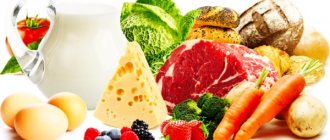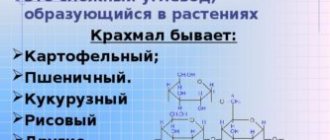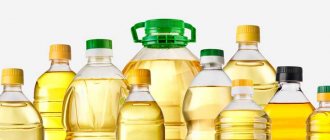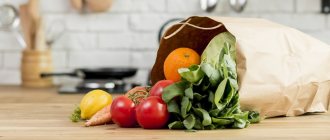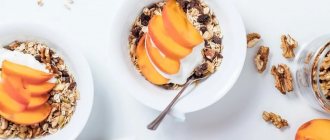Losing weight is an art. You can’t lose weight without knowing the properties and compatibility rules of products.
Losing weight is a complex, lengthy and painstaking process. Not every person who has set out on the path of losing weight knows how to lose weight correctly so as not to harm their health. The first step is to make a list of essential foods for weight loss. Next, a training program is built depending on what kind of body a person wants to “build” for himself.
Proper nutrition is the basis for effective fat burning. No amount of physical activity can “save” a person who eats unhealthy, fatty, high-calorie foods. The percentage of fat in your body will directly depend on how you eat.
Proper nutrition
It is believed that if a person loses weight or leads a healthy lifestyle, then the range of foods available to him is sharply reduced.
- This myth exists only because of the existence of diets. Diets that require eating two apples, a pack of cottage cheese or half a chicken breast per day.
- To really lose weight once and for all, you will have to change your eating habits, open up to new things, overcome your fears, eating habits and doubts.
- At first, the food seems unusual, but then the taste buds adapt to the new tastes and you begin to enjoy the food.
Proper nutrition is delicious!
List of products for weight loss
Cereals are the main, but not the only source of “slow” carbohydrates necessary for weight loss. Cereals also contain a certain amount of vegetable protein and a lot of fiber. Almost all of them have a low glycemic index. Cereals are very nutritious and healthy. They can be eaten at any meal.
- You should limit semolina, white rice (polished and round), and couscous.
- Healthy cereals include : buckwheat, millet, pearl barley, barley, oatmeal, rice (steamed, long grain, red, brown, wild), wheat, bulgur.
Legumes are also a “slow” carbohydrate, like cereals, vegetables, and herbs. Having excellent nutritional value, legumes contain many vitamins necessary for weight loss.
- Healthy legumes include : lentils (red, orange, yellow, green, brown), beans (white, black, red), split peas, green peas, beans (green), chickpeas, mung beans.
Cereals - Cereals are an exceptional product. Their difference from cereals is that cereals can germinate. And in sprouts, the amount of useful elements necessary for weight loss increases many times.
- Cereals useful for weight loss include : rye, wheat, green buckwheat, whole grain or unrefined oats. Some legumes can also germinate, although they are not cereals.
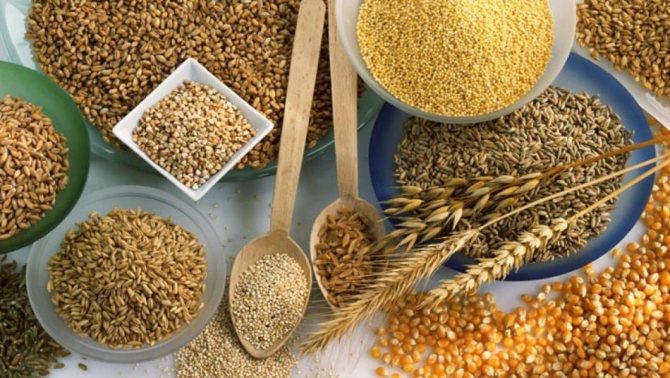
. Fruits and berries are “fast” energy. Fruits and berries fill you up very quickly and have a medium glycemic index.
- This is an excellent dessert, a replacement for sweet flour products.
- They can be added to almost any dish; they do not spoil the taste.
- Fruits and berries contain a huge amount of antioxidants and vitamins.
- Fruits are your youth and beauty.
All fruits and berries can be considered healthy. The berries are, of course, edible.
Vegetables - it’s not without reason that they say that fruits are tasty and vegetables are healthy.
- Indeed, vegetables do not fill you up as quickly as fruits, but they do not cause such a sharp jump in insulin in the blood.
- Vegetables are the main source of plant-based fiber.
Vegetables, like fruits, are all healthy. Even potatoes, the consumption of which is kept to a minimum by those losing weight, are useful within reasonable limits.
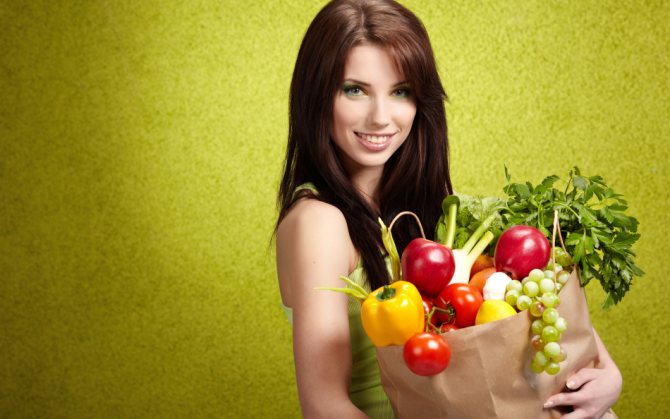
Greens. It should be placed on a separate pedestal. Greens are much healthier than vegetables and fruits combined.
- If we look at the amount of protein, fat and carbohydrates in greens as a percentage, we get the following: 45/5/50.
- Greens also do not contain fat.
- It is not just an antioxidant, but also a whole storehouse of vitamins.
- Parsley, dill, spinach, lettuce, basil, arugula, mint will give your dish an unforgettable, juicy taste.
All edible greens are good for weight loss.
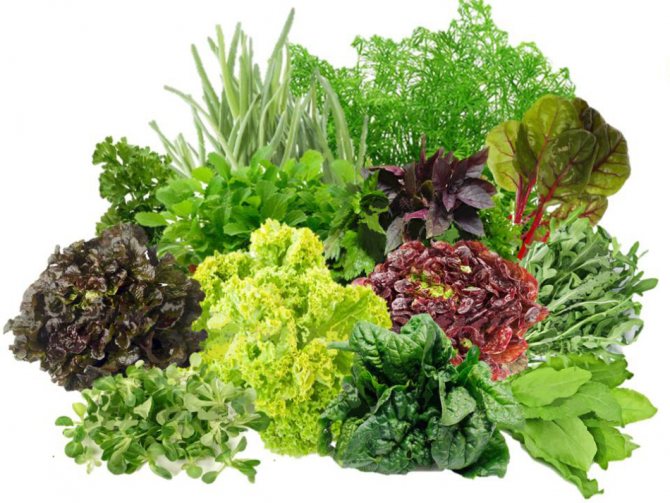
Meat, poultry . Everyone knows that meat and poultry are the most reliable source of animal protein. They do not contain carbohydrates, only a small amount of fat, which depends on which part of the carcass you specifically take.
- It is worth noting that large amounts of animal protein are very harmful to health, especially the kidneys and liver.
- Vegans and vegetarians can replace meat and poultry with plant sources of protein (cereals, legumes, greens).
As for meat, it is not recommended for those losing weight to eat fatty pork and beef. It is necessary to reduce the amount of lamb. Beef, rabbit, lean pork, chicken, turkey, goose, and duck are allowed (in moderation).
Meat gastronomic products are not considered meat (those who are losing weight exclude them).
Fish and seafood are also a source of animal protein, but due to their high cost, they are often forgotten.
In fact, fish contains a large amount of fatty acids necessary for our body. This is especially important for women to maintain healthy skin, hair, nails and for a regular menstrual cycle.
For those losing weight, it is preferable to eat steamed, baked or grilled fish.
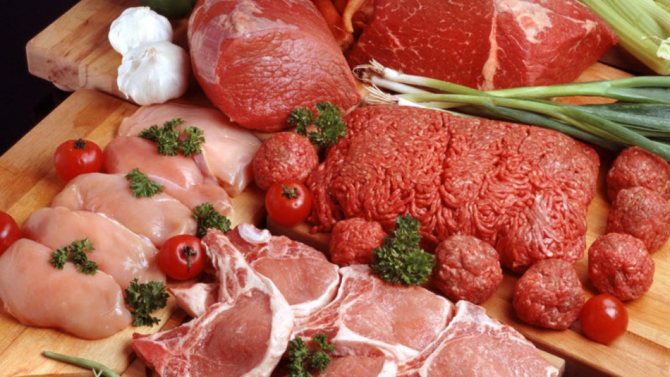
Animal source of protein
Dairy and fermented milk products. At the same time, beloved and unloved by everyone who is losing weight, kefir tops the list of healthy fermented milk products.
- Those losing weight are advised to reduce milk consumption, as it can cause stagnation of fluid in the body and, as a result, the appearance of edema and cellulite.
- Fermented milk and dairy products useful for weight loss include: kefir, yogurt without additives and sugar, sourdough, kumiss, fermented baked milk, milk, sour cream, cream, cottage cheese.
- Harmful ones include snowballs and yoghurts with sugar and additives.
- It is not recommended for those losing weight to consume low-fat dairy and fermented milk products, since in the process of “lowering them” all the beneficial substances were lost.
Cheeses are a source of protein and animal fats. They are very high in calories and contain a lot of salt.
- should limit their consumption
Eggs are a fairly healthy product; they contain proteins, fats, and carbohydrates at the same time.
- Those losing weight give preference only to proteins, although yolks contain all the necessary components for the functioning of the body. It's all about the amount of food eaten.
- You can eat any eggs that are edible.
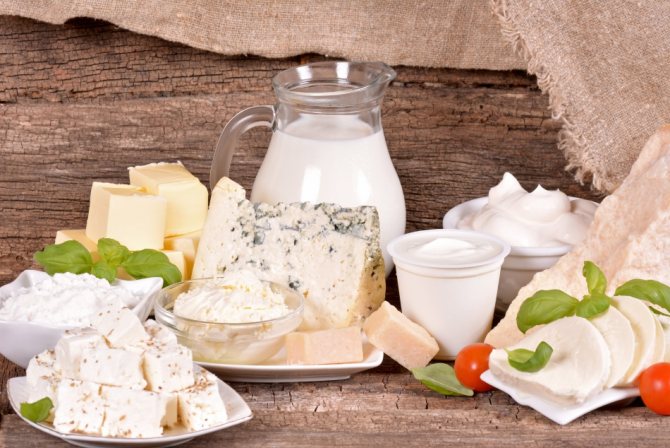
Vegetable oils . Those who are losing weight should not avoid oils. The daily norm of oil is 30 g (1 tablespoon). This is approximately 300 kcal.
- Butter is a source of vegetable fat (not the fat that is deposited on the sides and legs).
- This is a healthy fat that participates in metabolic processes in the body.
- Women should be careful about fats.
- A lack of fatty acids in the body can lead to serious health problems.
Nuts and seeds. Nuts and seeds are quite high-calorie, heavy foods. They contain a lot of fat and protein.
- Those who are losing weight are not recommended to eat a lot of nuts, but they can “get” their caloric intake if they don’t have enough calories per day.
- The optimal daily dose of nuts is 30 grams.
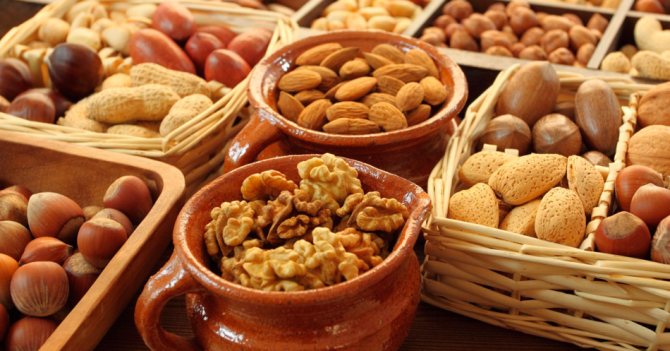
Mushrooms are possible and even necessary for those losing weight. Especially vegans and vegetarians. Mushrooms are low in calories, nutritious, and contain a lot of protein.
- Both wild mushrooms and artificially grown champignons are useful for losing weight
- Since mushrooms are classified as heavy food, it is recommended to eat them in the first half of the day.
- Eating mushrooms for dinner is contraindicated for people with gastrointestinal diseases.

Pasta can also be dietary. Usually pasta is made from premium flour, but such pasta is not suitable for weight loss.
But if they are made from durum wheat flour (that is, wheat that has not been stripped of its shell), then such pasta is allowed and is even considered useful for weight loss.
Bread and bakery products . Even those who are losing weight can eat bread. One or two pieces of whole grain wheat, rye or bran bread will not harm your figure if they are correctly included in the overall caloric intake.
- made from white wheat flour, bread with added sugar, molasses and yeast are not recommended for weight loss
- The ideal bread for weight loss contains the mentioned flour, salt and water.
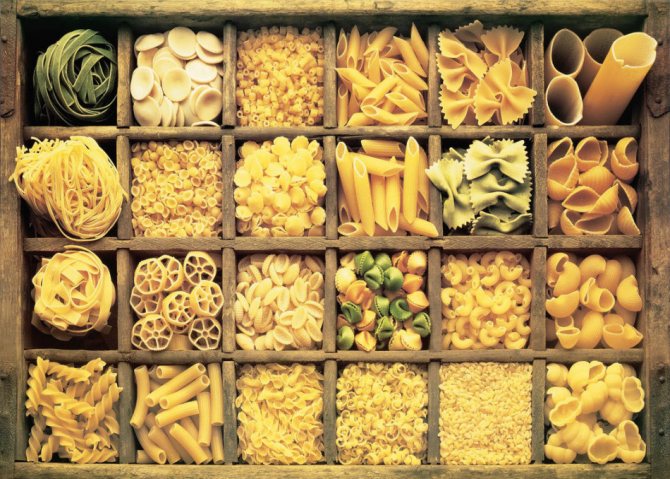
Pasta can be healthy
Salmon
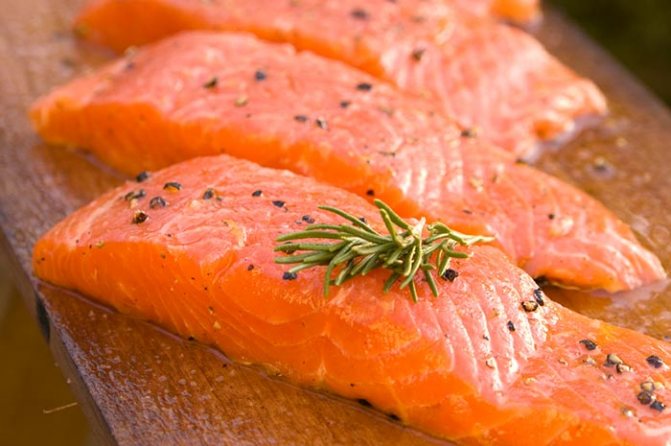
Fatty fish like salmon are incredibly healthy foods. It has a relatively low calorie content, but satisfies well, leaving you feeling full for several hours. Salmon contains a lot of protein, healthy fats, and all sorts of important nutrients. Fish and seafood are rich in iodine. This microelement is necessary for the normal functioning of the thyroid gland and promotes optimal metabolism. Scientists say that a large number of people in the world do not get enough iodine. Salmon is high in Omega-3 fatty acids. According to American researchers K. Lumeng and A. Saltiel, there is a direct connection between obesity and metabolic diseases: Omega-3 acids help reduce inflammation, which plays a significant role in the development of obesity and metabolic disorders. Mackerel, sardines, trout, herring are also healthy and healthy foods.
Low-calorie foods for weight loss: list
Low-calorie products traditionally include those products whose calorie content does not exceed 100 kcal per 100 grams of product.
The following are considered low-calorie:
- Fruits (except avocado)
- Vegetables (except potatoes. Its calorie content is only 80 kcal per 100 g, but it has a high glycemic index)
- Berries
- Mushrooms
- Greenery
- Eggs
- Dairy
- Dairy products
You should not limit your diet exclusively to low-calorie foods. Not having enough calories is just as bad as having too many calories. Both extremes can be very harmful to your body.
Diversify your diet. Add more grains, nuts, oils. If you wish, you can include meat, fish, seafood, poultry, and cheeses in your diet.
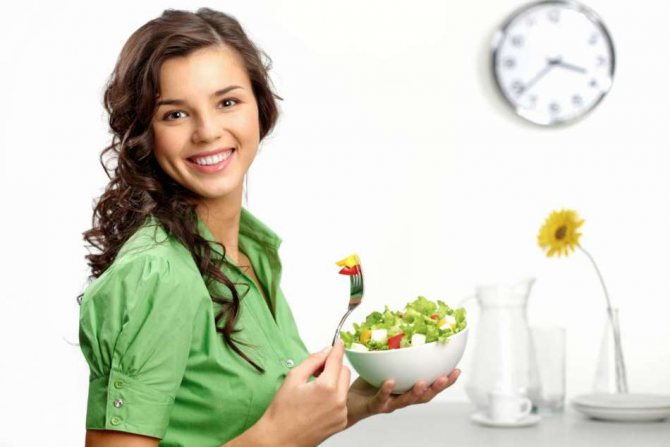
Low calorie foods
List of protein foods for weight loss
The list of protein products is extensive. It should be said that there are pure protein products, protein products containing fats and protein-carbohydrate products.
List of predominantly protein foods suitable for weight loss:
- Chicken meat (mostly breast)
- Lean beef
- Rabbit meat
- Lean fish
- Seafood
- Cottage cheese (low fat or low fat)
- Egg white
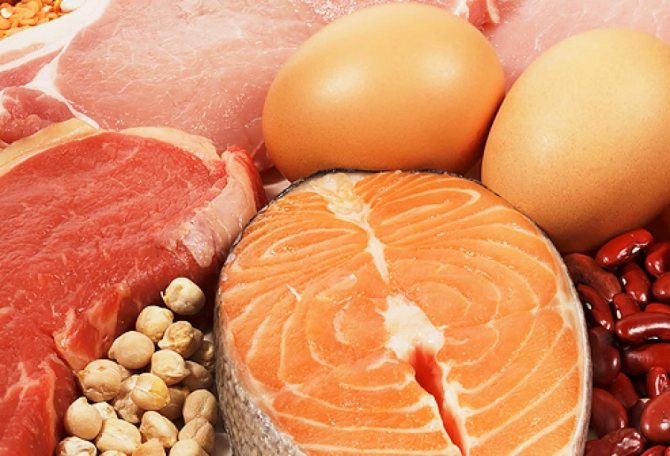
List of protein-carbohydrate products:
- Mushrooms
- Greenery
- Cabbage
- Kefir (low-fat)
- Milk (not fat)
- Chickpeas
- Peas
- Green beans
- Soy meat
- Soybeans
- Lentils
- Colored beans
List of foods rich in proteins and fats at the same time:
- Fatty beef
- Chicken legs, thighs
- Fat cottage cheese
- Full fat milk
- Full fat kefir
- Nuts, seeds
- Fatty fish
- Whole egg
- Cheeses
- Sour cream
Protein products
Diet recipes
Those who are losing weight should not get carried away with fried foods, so you should get a steamer or multicooker. This technique allows you to cook, stew and bake food without excess fat. But even without them you can prepare simple and tasty dishes.
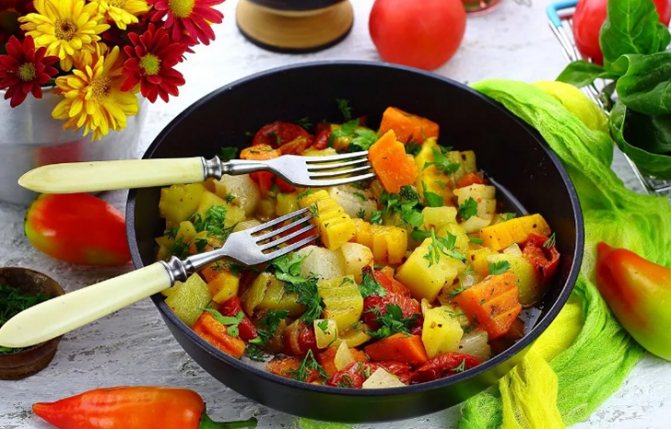
- Salads. The best option is to eat fresh vegetables, because some vitamins are lost during heat treatment. Salads should contain cabbage, carrots and other vegetables rich in coarse fiber. Mayonnaise is prohibited. For dressing, it is permissible to use yogurt, a little low-fat sour cream (10%) or a minimal amount of vegetable oil.
- Soups. Rich broth made from fatty meat is absolutely not suitable for their preparation. It is better to cook vegetables or with lean fish. Tender puree soups are the most favorable food for gastritis.
- Stew. This dish is great because it can be prepared from any set of vegetables with the addition of meat or fish. The main condition of the dietary option is less fat and potatoes, more low-calorie zucchini, cabbage, tomatoes, and pumpkin.
- Cutlets. For minced meat you will need poultry or beef, carrots and onions without frying. Diet cutlets are good to steam.
- Baked meat. If you try, even the bird will turn out tasty and not dry. For example, juicy chicken breast in the oven does not require much time to cook.
- Cottage cheese dishes. If you take a low-fat product, it will make a dietary cottage cheese casserole with pumpkin or apples, cheesecakes with crushed oatmeal instead of flour.
Many healthy recipes for weight loss can be found on our website.
List of weight loss products containing slow carbohydrates: list
- “ Slow ” carbohydrates are carbohydrates that are absorbed by our body over a fairly long period of time. When such a carbohydrate enters the stomach, the body takes time to recognize it and begin to digest it.
- Insulin is released into the blood, but not as fast as what happens with “fast” carbohydrates. And the slower insulin is produced, the longer the feeling of fullness lasts.
- In this case, the decline in insulin levels also occurs slowly, so the feeling of hunger after “slow” carbohydrates does not occur soon.
“Slow” carbohydrates for weight loss include:
- Cereals (all except couscous, semolina, round rice and polished rice)
- Legumes (all, without exception)
- Vegetables
- Durum wheat pasta
- Whole grain or rye bread
- Cereals
There is an opinion that a person needs “slow” carbohydrates in the morning and afternoon, but this is not so. If you are losing weight and are active throughout the day, then you need “slow” carbohydrates throughout the day. In the morning, give preference to oatmeal and millet porridge.
For lunch, eat a portion of vegetables with buckwheat, pearl barley or legumes. For dinner, leave vegetables, legumes, and buckwheat.
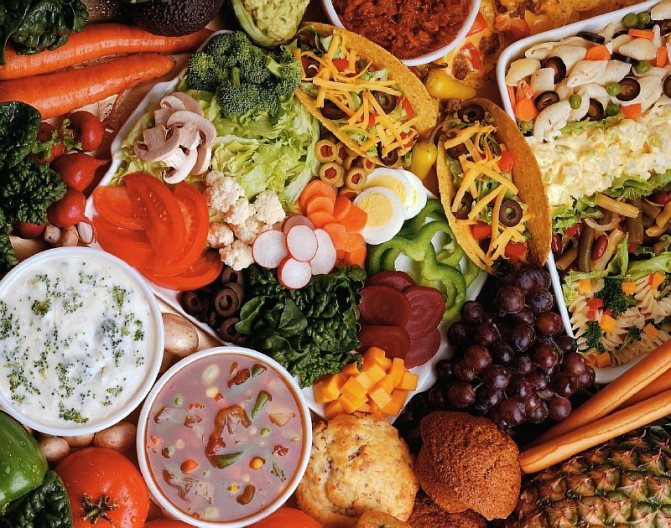
Vegetables are “slow” carbohydrates
Boiled potatoes
Potatoes are not very popular in the world of healthy eating. But this vegetable has several properties that make it an ideal food for both weight loss and health maintenance. It contains an incredibly diverse range of nutrients, with a little bit of everything you need. There are even stories of people who lived on potatoes alone for extended periods of time. Potatoes are especially rich in potassium, which plays an important role in controlling blood pressure, but which we often don't get enough of. The Satiety Index table shows that boiled white potatoes rank first among other foods in terms of their effect on satiety. This means that by eating boiled potatoes, you will be full and eat less of other foods. If you cook potatoes and then let them cool, they form large amounts of resistant starch, a fiber-like substance that has been shown to have all sorts of health benefits, including increased weight loss (A. Nugent, “The Nutritional Benefits of Resistant Starch”). starch"). Sweet potatoes (yams), turnips and other root vegetables are also very healthy.
What weight loss foods contain fiber?
What is fiber?
In simple terms, it is the insoluble (rough) part of plants. Thanks to the presence of fiber in our diet, we do not have digestive problems. It normalizes intestinal function and prevents constipation and bloating.
Too much fiber (especially that found in grains) in your diet can damage the thin walls of your intestines. But a large amount of vegetables with fiber present in them will not only not harm the body, but will also improve its functioning, which is necessary for losing weight.
The most fiber is found in:
- Vegetables
- Greenery
- Fruits (mainly pears, persimmons, apples)
- Krupach
- Legumes
- Gribakh
- Berries
- Nuts and seeds
- Dried fruits
- Cereals
- Whole grain bread
- Durum wheat pasta
If your diet does not include fruits, cereals and vegetables, then you will soon become deficient in fiber. Additional fiber is found in bran and is sold at the pharmacy in the form of small flakes. But such fiber can be addictive.
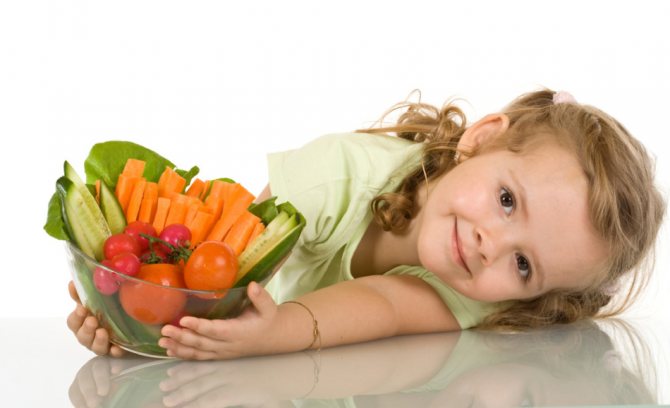
Vegetables contain the most fiber
Some whole grains
Although grains have gotten a bad rap in recent years, there are some types that are definitely healthy. These are whole grain cereals that are rich in fiber and contain a sufficient amount of protein. The most striking examples are oatmeal, brown (unrefined) rice and quinoa. Oats are rich in beta-glucans, a soluble fiber that has been shown to increase satiety and improve metabolism. Rice, both brown and white, can contain significant amounts of resistant starch, especially if it is refrigerated after cooking. Keep in mind that processed grains are clearly not fat burning. Sometimes the foods that are marketed are highly processed junk foods that are unhealthy and cause weight gain. If you're on a strict low-carb diet, you'll probably avoid grains since they're high in carbohydrates. But there's nothing wrong with eating some healthy whole grains as long as you can tolerate them and aren't on a low-carb diet.
Negative calorie foods for weight loss: list
Negative calorie foods are controversial. If we talk about it seriously, those foods that have a negative calorie content are the ones that require a little more energy to digest than the human body can get from these foods. These are either very low-calorie foods, or, on the contrary, very heavy.
Most often these include:
- Low-calorie vegetables (cucumbers, tomatoes, zucchini, carrots, celery, pumpkin)
- Low-calorie fruits (apples, pears, watermelon, apricots)
- Berries (strawberries, strawberries, blueberries, blueberries, currants, raspberries)
- Fermented milk products (low-fat kefir and cottage cheese)
- Eggs
- Nuts (and this is despite their high calorie content)
- Greenery
- Water, tea, coffee, juices (no sugar)
The theory of “Negative Calorie Foods” states that “negative” foods can be eaten in any quantity, and they will not interfere with weight loss.
But if you imagine that a person eats a kilogram of nuts a day, eating apples and cottage cheese, and at the same time strives to lose weight, he will most likely have his temple twisted. Such a diet is more likely to lead to weight gain.
Therefore, the theory of “Negative Calorie Foods” is highly questionable.
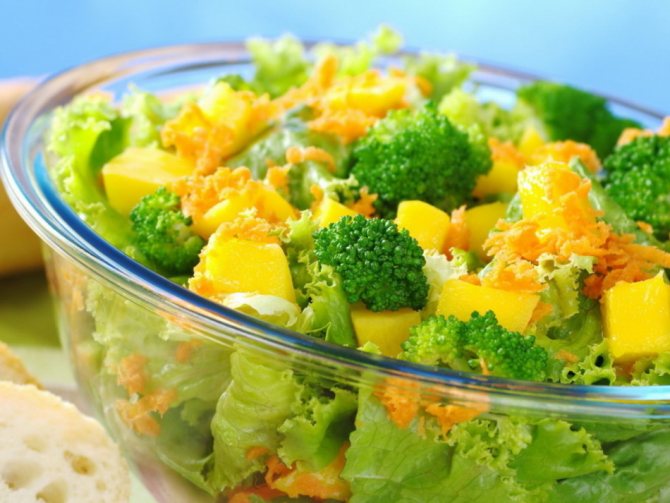
An example of a salad with “negative” calories
What suppresses appetite and helps burn fat
When choosing a diet, you should not ignore the question of which foods burn fat and promote weight loss. These include nuts rich in fatty acids, fruits, dried fruits, and berries that saturate the body with fiber. Grocery list:
- peanuts - useful for snacking, reduces cholesterol, body weight due to rapid saturation with fiber and proteins, the allowed daily amount is 10 pieces;
- pine nuts – reduce appetite, rich in saturated proteins, daily intake – 50 g;
- almonds – contains dietary fiber, vitamins, calcium, phosphorus, iron, normalizes cholesterol when consumed 30 g daily;
- walnuts and oil from them - you can eat two of them with porridge per day, suppress cravings for sweets, prevent sagging skin;
- apples and pears - have almost zero calorie content, but fill the stomach for a long time;
- grapefruit – reduces insulin levels, helps increase the speed of the process of weight burning, weight loss, you can drink 150 ml per day or eat half the fruit;
- figs - the product does not contain fat, is low in calories, satisfies hunger with only 2-3 pieces;
- pineapple – rich in bromelain, which accelerates the breakdown of fats;
- kiwi – enhances the process of weight loss, helps eliminate bad cholesterol, one fruit saturates the body with the daily requirement of vitamin C;
- avocado – contains quickly digestible fats, saturates the body for a long time;
- dried fruits – rich in vitamins and fiber; you can drink dried apricots or dates with tea, and snack on raisins and prunes;
- berries - fresh and frozen raspberries, currants, strawberries, gooseberries, honeysuckle, blueberries remove fat reserves and lower glucose levels.
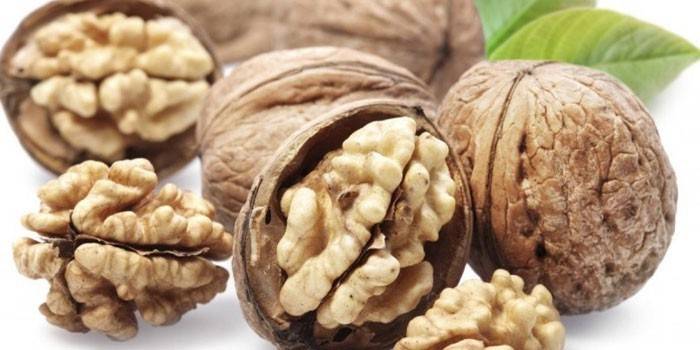
Food compatibility for weight loss: table
Separate nutrition has existed for a long time and has its followers. Unfortunately, people often don't think about what they eat and how they eat it. You can often see nuts and fruits on the plate along with the meat. But these products in such a combination simply will not be absorbed, which will lead to weight gain.
The theory of separate nutrition explains the rules for combining food products so that they can bring maximum benefit to your body and do not interfere with each other’s absorption.
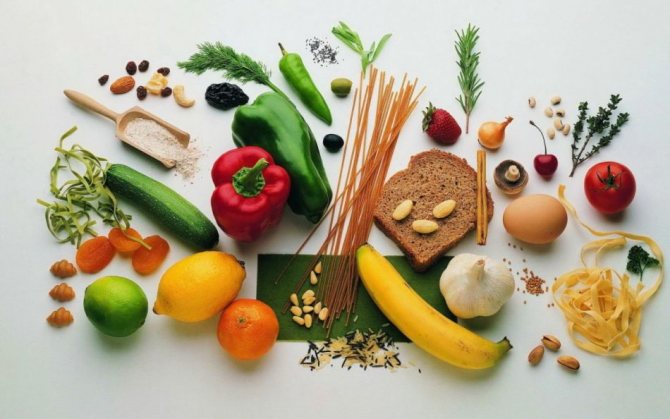
The human body is healthy as long as it has a normal acid-base balance. As soon as a “skew” occurs in one direction or another, the person’s condition sharply worsens and weight gain occurs.
Products are: neutral, alkaline and acidic.
- Foods containing a high percentage of protein are classified as acidic
- To alkaline - a large amount of carbohydrates.
- Other products are considered neutral .
Below is the food compatibility table:
| 1 | 2 | 3 | 4 | 5 | 6 | 7 | 8 | 9 | 10 | 11 | 12 | 13 | 14 | 15 | 16 | 17 | 18 | |
| 1. Meat, poultry | 0 | 0 | Z! | Z! | Z! | Z! | Z! | OS | PS | Z! | Z! | Z! | Z! | Z! | Z! | Z! | Z! | Z! |
| 2. Fish, seafood | 0 | 0 | Z! | Z! | Z! | Z! | Z! | OS | PS | Z! | Z! | Z! | Z! | Z! | Z! | Z! | Z! | Z! |
| 3. Fruits are sweet | Z! | Z! | 0 | Z! | PS | PS | Z! | OS | PS | PS | PS | OS | Z! | PS | OS | Z! | Z! | Z! |
| 4. Sugar and confectionery products | Z! | Z! | Z! | 0 | Z! | Z! | Z! | OS | Z! | Z! | Z! | Z! | Z! | Z! | Z! | Z! | Z! | Z! |
| 5. Sour cream | Z! | Z! | PS | Z! | 0 | PS | PS | OS | OS | Z! | OS | OS | OS | Z! | OS | PS | PS | Z! |
| 6. Vegetable oil | Z! | Z! | PS | Z! | PS | 0 | Z! | OS | OS | OS | OS | PS | OS | Z! | Z! | Z! | Z! | OS |
| 7. Butter | Z! | Z! | Z! | Z! | C | Z! | 0 | OS | OS | Z! | OS | PS | OS | Z! | PS | Z! | Z! | PS |
| 8. Non-starch leafy, green vegetables | OS | OS | OS | OS | OS | OS | OS | 0 | OS | OS | OS | OS | OS | Z! | OS | A | A | OS |
| 9. Starchy leafy vegetables | PS | PS | PS | Z! | OS | OS | OS | OS | 0 | OS | PS | PS | OS | OS | OS | A | PS | OS |
| 10. Nuts | Z! | Z! | PS | PS | Z! | OS | Z! | OS | OS | 0 | OS | OS | Z! | Z! | OS | PS | Z! | PS |
| 11. Pomegranate and sour fruits | Z! | Z! | PS | Z! | OS | OS | OS | OS | PS | Z! | 0 | OS | Z! | Z! | PS | A | A | Z! |
| 12. Semi-sour fruits | Z! | Z! | OS | Z! | Z! | PS | PS | OS | PS | Z! | OS | 0 | Z! | PS | OS | PS | Z! | Z! |
| 13. Bread, cereals, potatoes | Z! | Z! | Z! | Z! | OS | OS | OS | OS | OS | PS | Z! | Z! | 0 | Z! | Z! | PS | Z! | PS |
| 14. Milk | Z! | Z! | PS | Z! | Z! | Z! | PS | Z! | PS | Z! | Z! | PS | Z! | 0 | Z! | Z! | Z! | Z! |
| 15. Sour dairy products | Z! | Z! | OS | Z! | OS | Z! | Z! | OS | OS | OS | PS | OS | Z! | Z! | 0 | OS | Z! | Z! |
| 16. Cheeses | Z! | Z! | Z! | Z! | PS | Z! | PS | OS | OS | PS | OS | Z! | PS | Z! | OS | 0 | Z! | Z! |
| 17. Eggs | Z! | Z! | Z! | Z! | PS | Z! | Z! | OS | PS | Z! | Z! | Z! | Z! | Z! | Z! | Z! | 0 | |
| 18. Legumes | Z! | Z! | Z! | Z! | OS | Z! | PS | OS | OS | PS | Z! | Z! | PS | Z! | Z! | Z! | Z! | 0 |
OS - this combination is optimal (optimal combination).
Z! — to preserve health, it is better to exclude such a combination (prohibited!).
PS - if there is an urgent need, these products can be combined, it will not cause much harm (suitable combination).
The numbers at the top of the table correspond to the names of the products below these numbers on the left side of the table.
For example : if we want to know how legumes and milk , then:
- We are looking for legumes on the left in the column.
- We look for the number on the left in the column under which milk appears.
- This is the number 14.
- We are looking for the intersection point of legumes with the number 14 - this is the desired result!
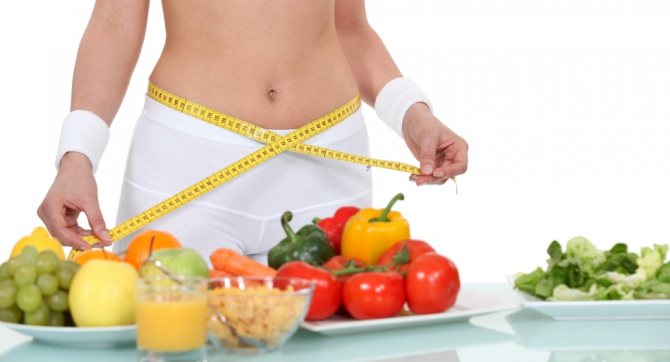
Healthy foods for weight loss
Incompatible foods for weight loss
Incorrectly combined foods can harm the body, cause bloating and constipation. What kind of weight loss can we talk about if the body is unhealthy?
There are rules that cannot be broken when combining products:
- Protein + protein. This is an extremely unacceptable combination. Especially when it comes to animal protein. If you decide to eat meat with fish, their enzymes will not be able to be fully absorbed, since there are no additional elements due to which protein is absorbed.
- Protein + fat . Fats have one very unpleasant feature: they envelop the walls of the stomach with a film, as a result of which the production of gastric juice decreases. And for the successful digestion of heavy animal food, the production of gastric juice should increase, but this does not happen. As a result, the protein simply decomposes and rots.
- Carbohydrate + carbohydrate. We are talking about any combination of carbohydrates (“fast” and “slow”). The stomach will be able to digest (and the intestines assimilate) only one type of carbohydrate at a time. Other carbohydrates will actively ferment.
- Carbohydrates + sugar . The combination is found everywhere in pastry shops, cafes, restaurants and even at home. These are all kinds of baked goods with sugar, jam, cream. This is such a strong blow to the entire digestive system that it will take a long time for the body to restore it.
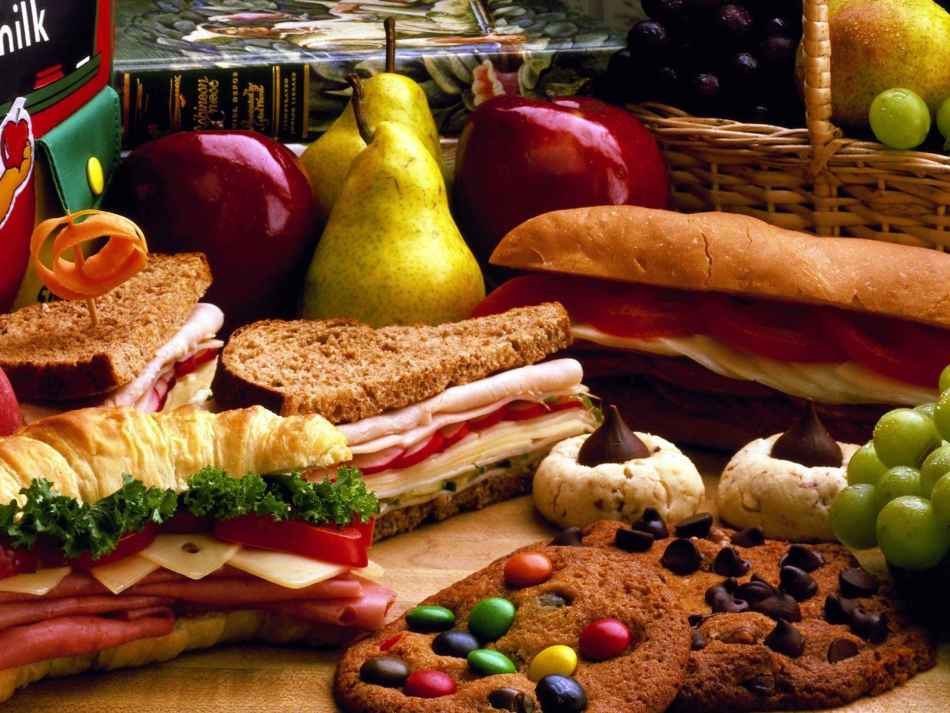
Incompatible foods
Harmful foods for weight loss: list
The list of harmful foods for weight loss is simply huge. There is such a variety of high-calorie and unhealthy dishes in the world that it is impossible to fit them into one article. There are many figure and health “pests” available in stores.
List of the most harmful foods for weight loss:
- Alcohol
- Sugar (except fruit)
- Products made from white wheat flour
- Deep fried or in a lot of oil
- Smoked
- Purchased crackers and chips
- Fast food
- Sweet drinks (carbonated and non-carbonated)
- Ice cream
- Margarine and butter 72.5% fat
- Instant food (noodles, mashed potatoes)
- Store juices
- Canned food in oil
- Sprats
- Sausages, frankfurters, wieners
- Sausage or processed cheese
- Creams on cakes (and cakes themselves)
- Condensed milk
- Mayonnaise and other sauces (ketchup)
- Bars (Twix, Bounty and others)
- Milk or white chocolate
- Curd mass, curd cheeses
- Muesli and instant porridges
- Sweets (sweets, marshmallows, marmalade, marshmallows, many dried fruits in sugar, candied fruits)
- Chewing gum
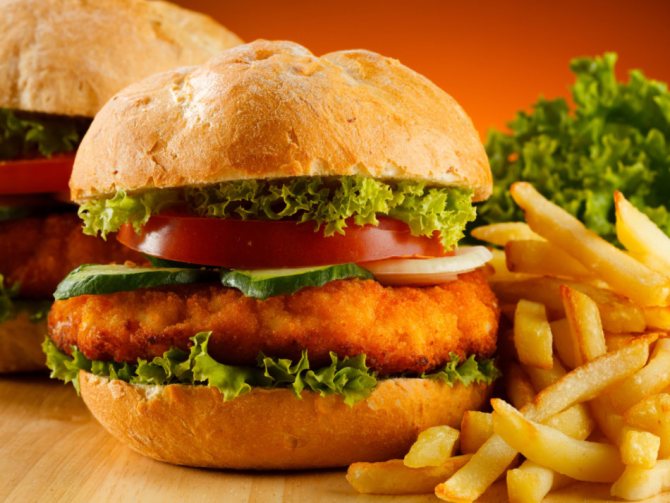
Harmful foods for weight loss
What foods can you eat for weight loss: tips and reviews
Now it is clear that to lose weight and stay healthy you need to eat only the cleanest foods possible.
For example, boiled and baked potatoes are ok, but chips or French fries are no longer allowed. Bread is not prohibited by proper nutrition, but store-bought crackers with spices, salt and fat are not allowed.
Reviews:
Anastasia, 34 years old, Kemerovo
I never tried to lose weight until my weight was over 100. Then I was terrified. I went to an endocrinologist, he diagnosed me with third-degree obesity. He prescribed a special diet. There was a lot of new information, I couldn’t lose weight until I learned how to combine foods correctly. I started with salads. The taste buds quickly got used to the absence of mayonnaise. Then I added cereals, fish, and milk. I didn’t eat meat, I didn’t want it. I lost 20 kg. I plan to lose the same amount in six months.
Olga, 19 years old, Moscow
I tried to lose weight for graduation, but it didn’t work out and I gave up on it for six months. During this time I gained a fair amount of weight. I decided to do away with diets and began to study the composition and properties of products. It turned out that my diet was close to ideal, only I ate a lot of potatoes and bread at one meal. I reduced the potatoes by 3 times and added stewed vegetables. I brought the bread over to the morning and started making healthy sandwiches. That’s how, by the end of the first course, I lost 5 kilograms thanks to the right combination of products.
What are diet foods and how do they help you lose weight?
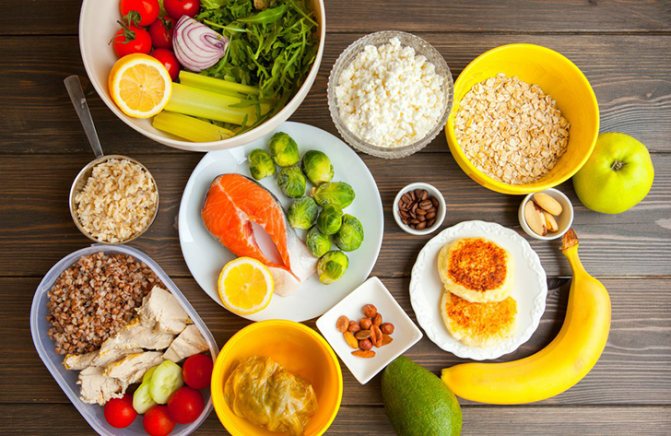
Dietary foods are usually called gentle foods. They bring the necessary compounds into the body, but do not create an extra burden on the gastrointestinal tract. This is achieved through:
- Chemical composition. The group of dietary products includes low-calorie foods that contain little fat and fast carbohydrates. At the same time, it should contain enough protein, fiber and vitamins.
- Method of preparation. Culinary techniques that are welcome are boiling (in water, steaming), stewing, baking. Fried foods are prohibited because they always contain more fat, they whet the appetite and irritate the gastric mucosa.
- Eating properly. Meals should be small and regular. Only in this case the body calmly digests food and uses all the calories for good. It is optimal to eat 5-6 times a day in small portions (3 main meals and 2 snacks).
Dietary products are usually prescribed to patients with certain diseases in order to curb their worsening and alleviate the person’s condition. They are recommended after operations or serious illnesses during the recovery period.
But they can be consumed as preventative meals to regulate metabolism and prevent health problems. First of all, this concerns excess weight.
Gentle food is easily digested, with proper nutrition there is no “overkill” in calories, fat is not stored as reserves. Due to slow carbohydrates and protein, this diet is quite filling, and fiber ensures cleansing of toxins from the body.

